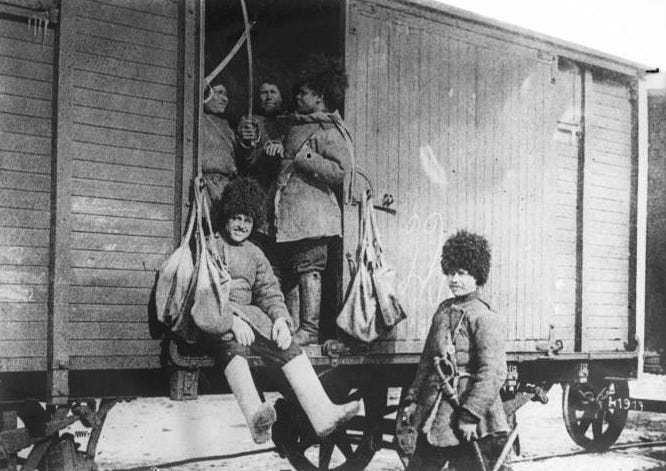How The Russian Railroad Ate Itself
A material history of the First World War, the Revolution, and the Civil War
On the eve of the First World War, the state of Russian railroads was not great. “By the end of 1913 the railway network measured 71,000 kilometers,” economic historian J.N. Westwood writes in A History of Russian Railways.1 Imperial politics held back track expansion, while the tracks that Russia did build were not meant to last. A “policy of building railways to low technical standards until growing traffic demanded improvements was, in theory, justifiable and no doubt permitted lines to be built which otherwise would have given impossibly low returns on capital,” but it also made expensive reconstruction necessary.
“About 600 km. of the Trans-Siberian line were rebuilt, to ease the gradients, only ten years after opening,” for example. “The narrow-gauge Yaroslavl-Archangel line, only six years after completion, was being converted to a broad gauge by laying an extra pair of rails outside the original ones.” Not only did this make snow and ice removal harder, “unwillingness to write off almost-new locomotives resulted in broad gauge trains being hauled by narrow gauge engines.” It was typical Russian inefficiency. War would test the Russian railroad system beyond its limits until the network was forced to cannibalize itself. By the time the Bolsheviks were finally secured in power, Russia’s railroads had been reduced by tens of thousands of track miles.
Keep reading with a 7-day free trial
Subscribe to Polemology Positions to keep reading this post and get 7 days of free access to the full post archives.



